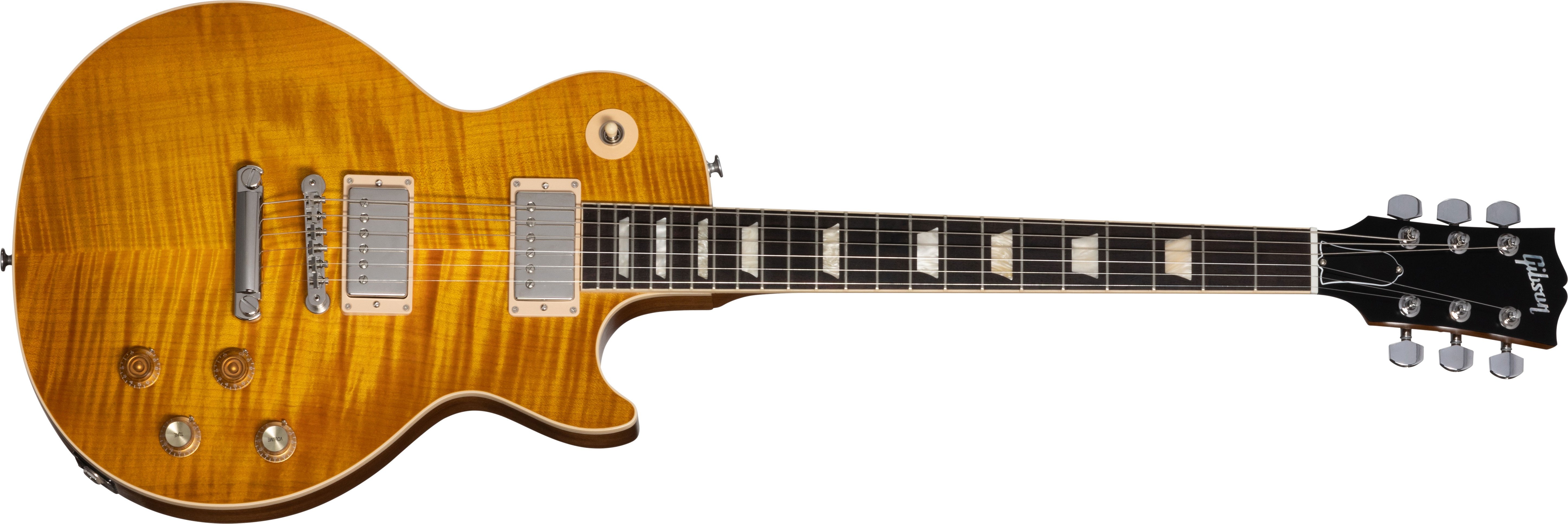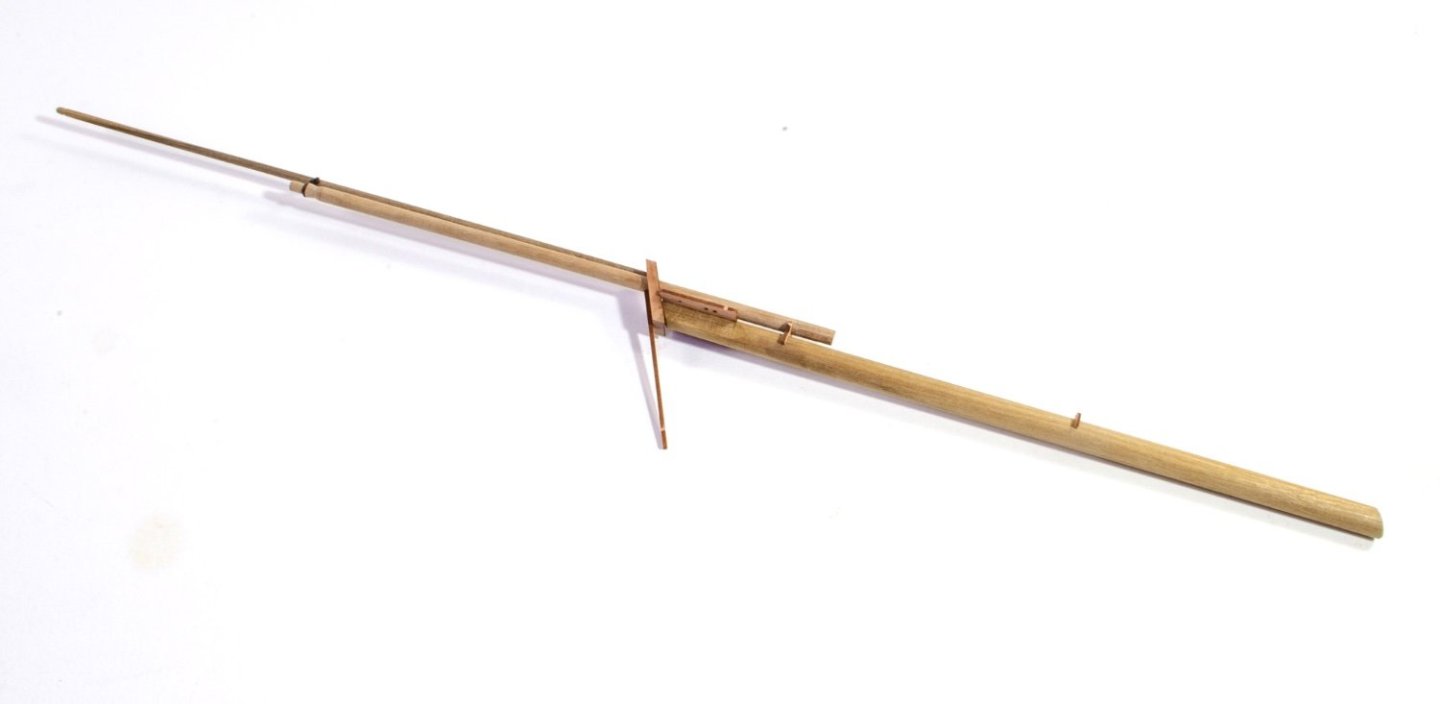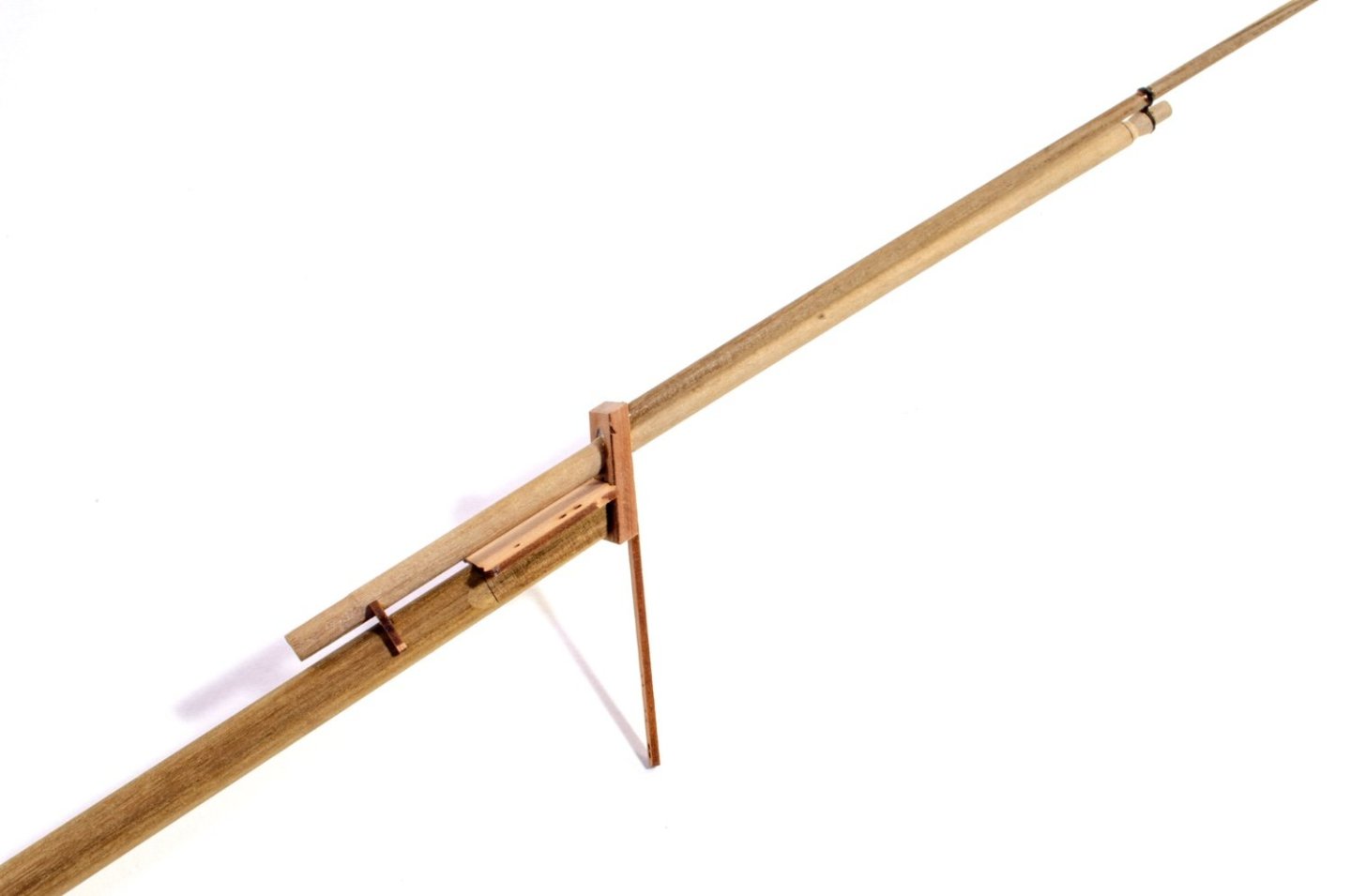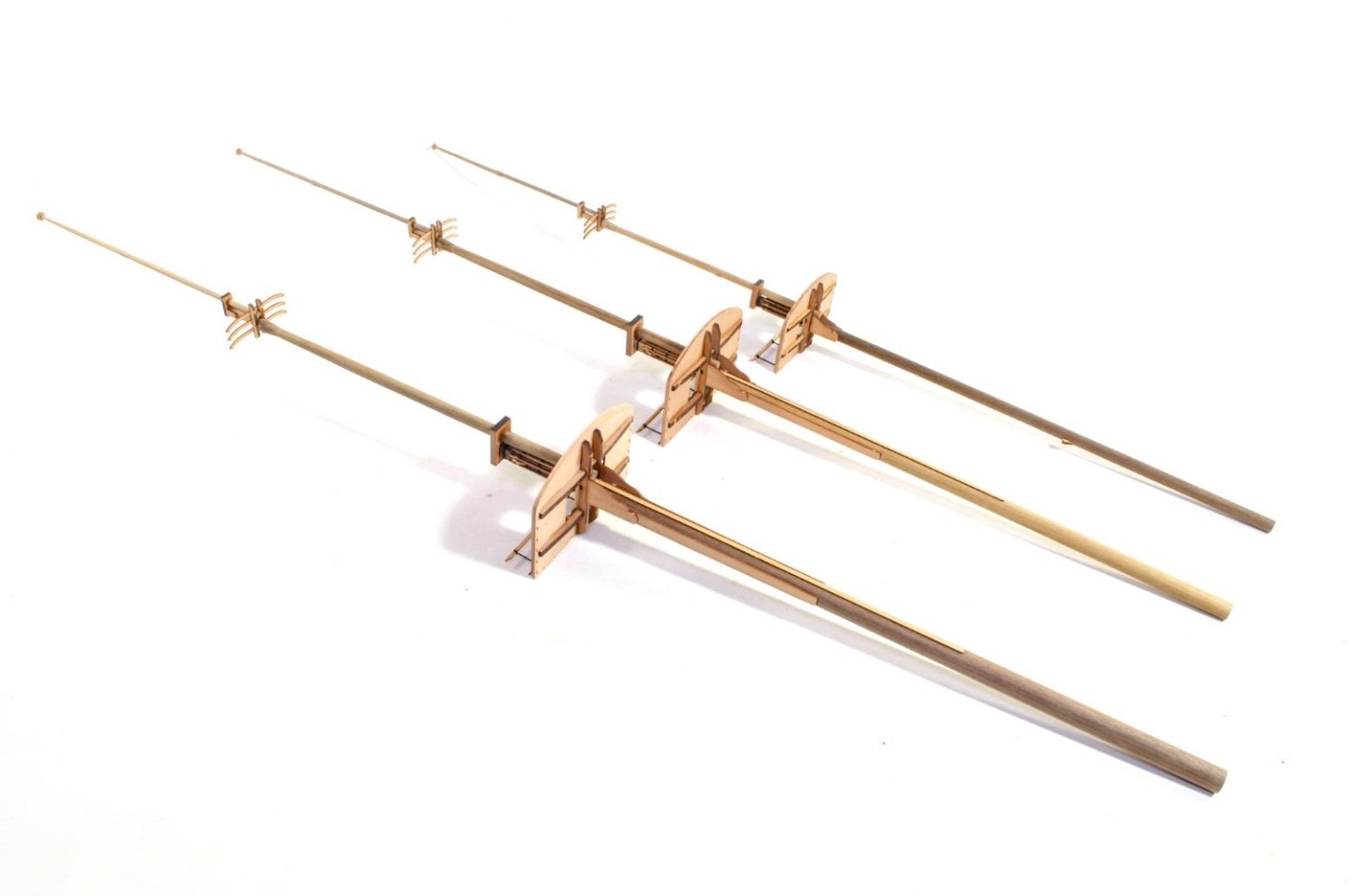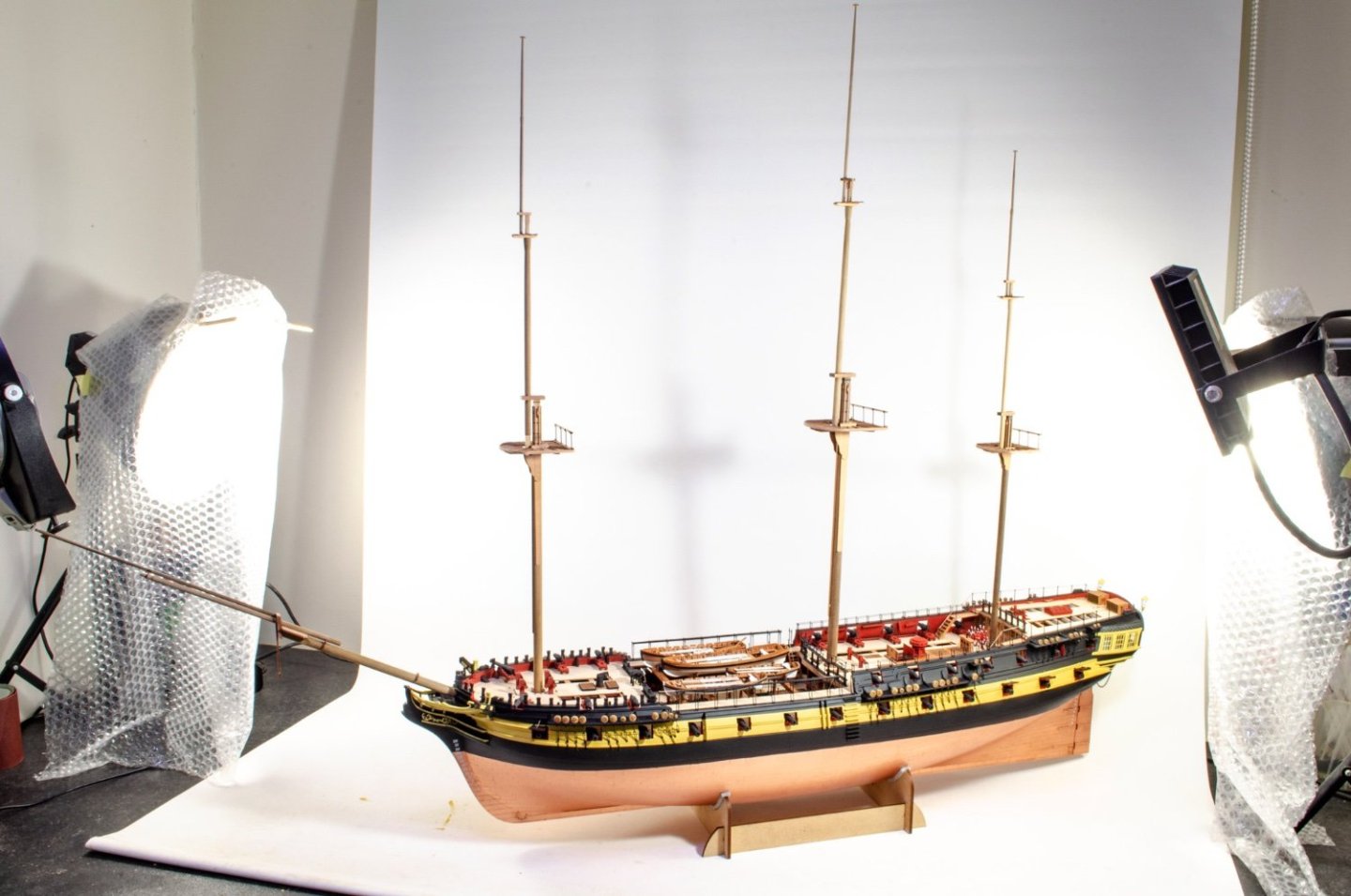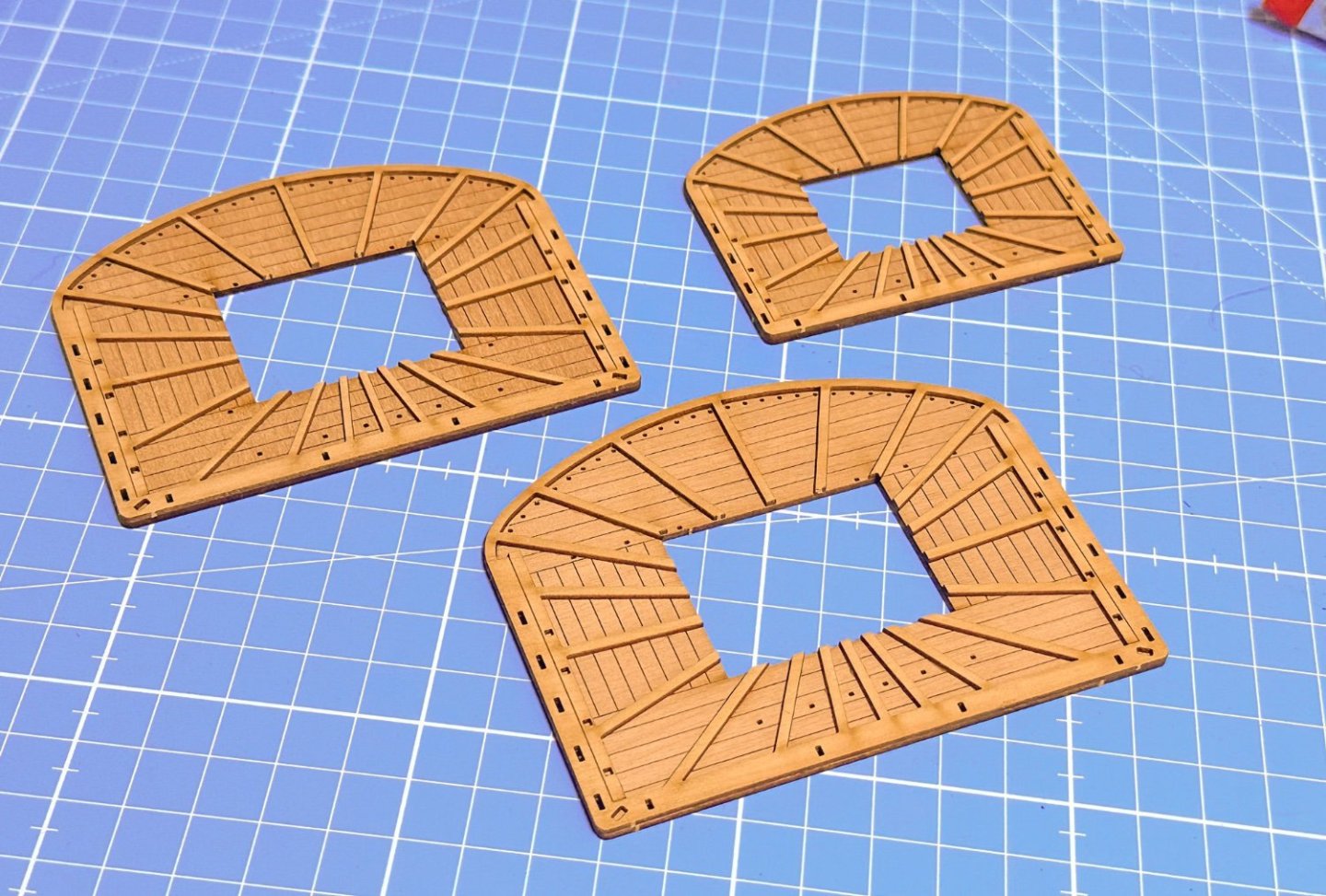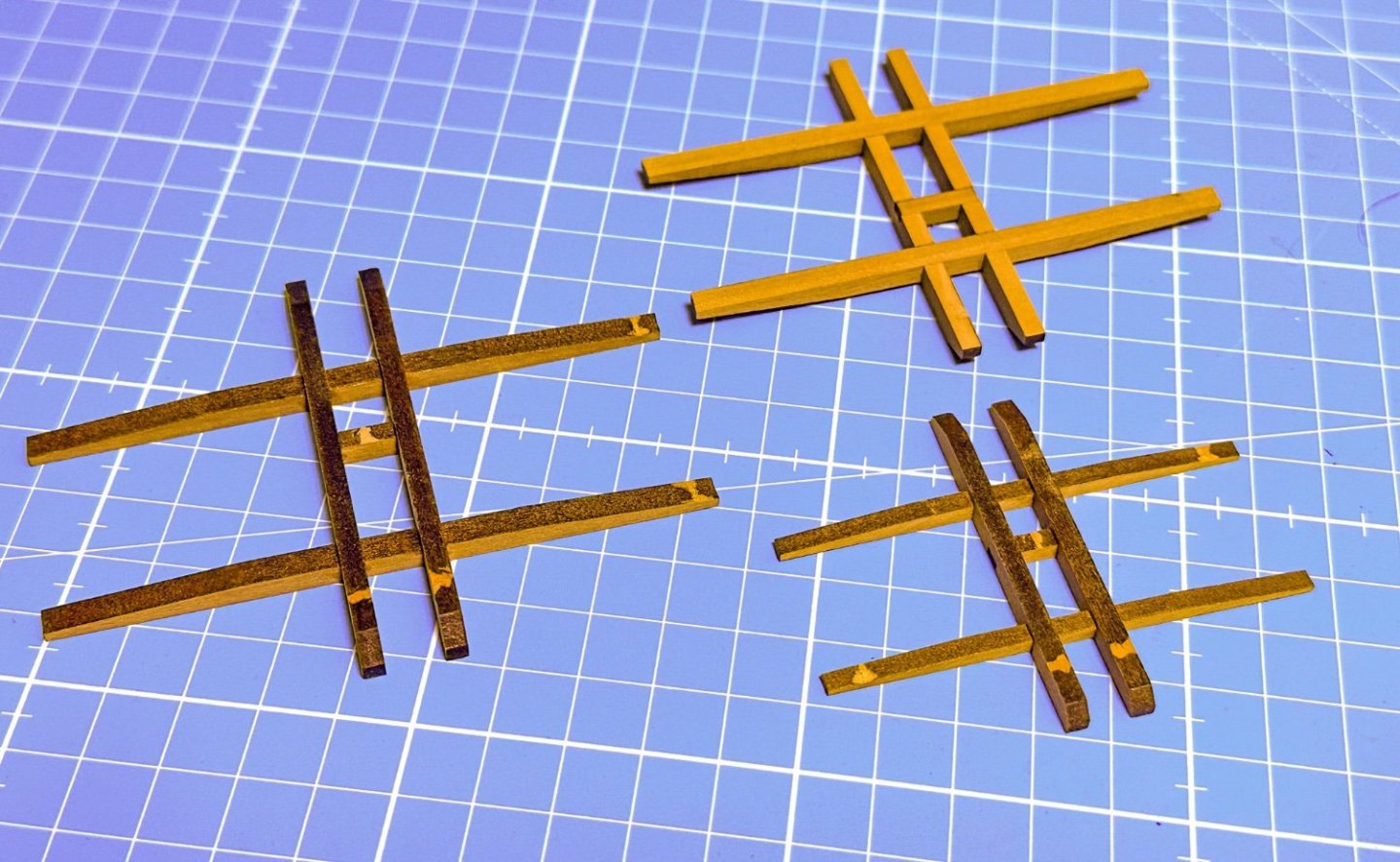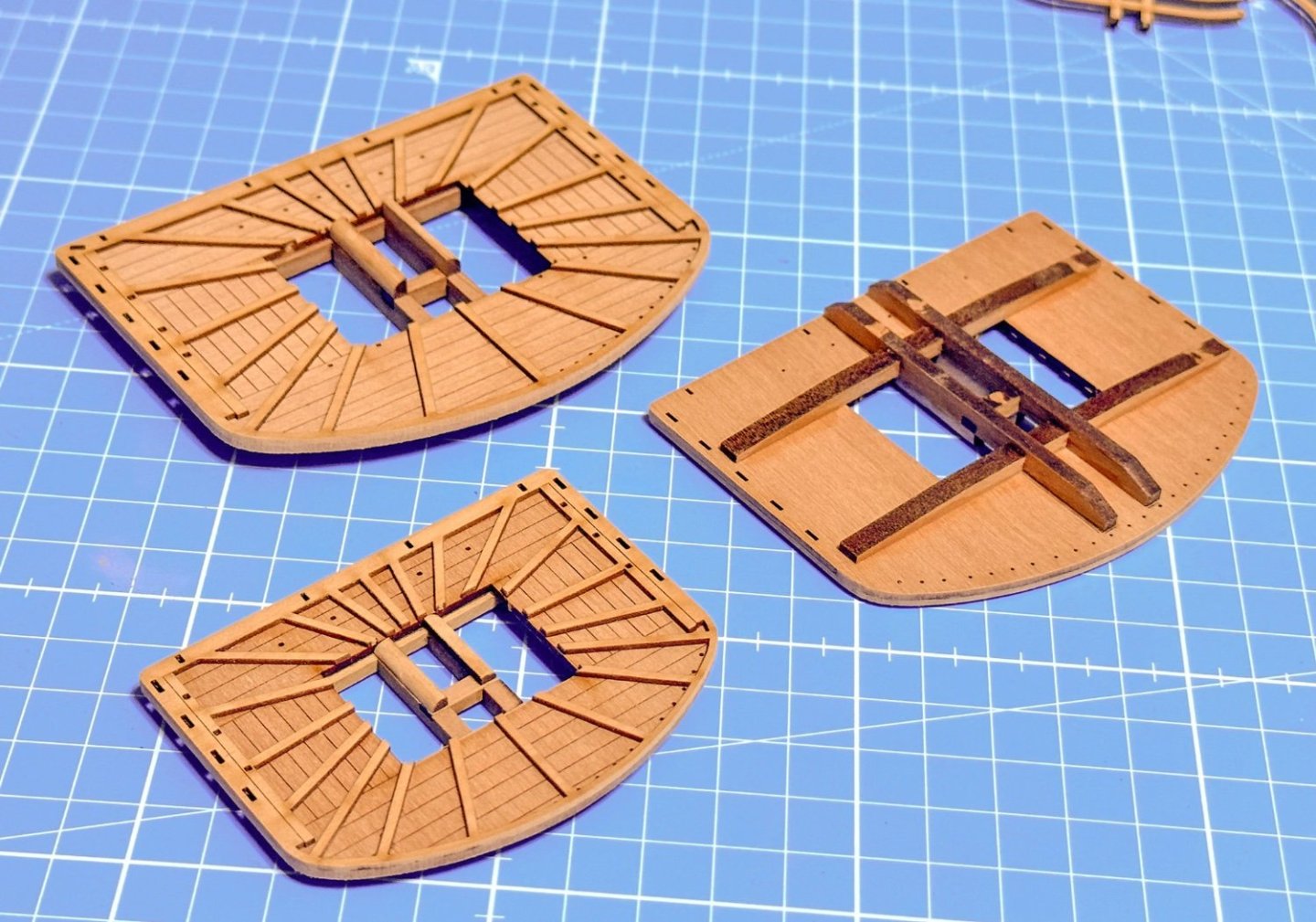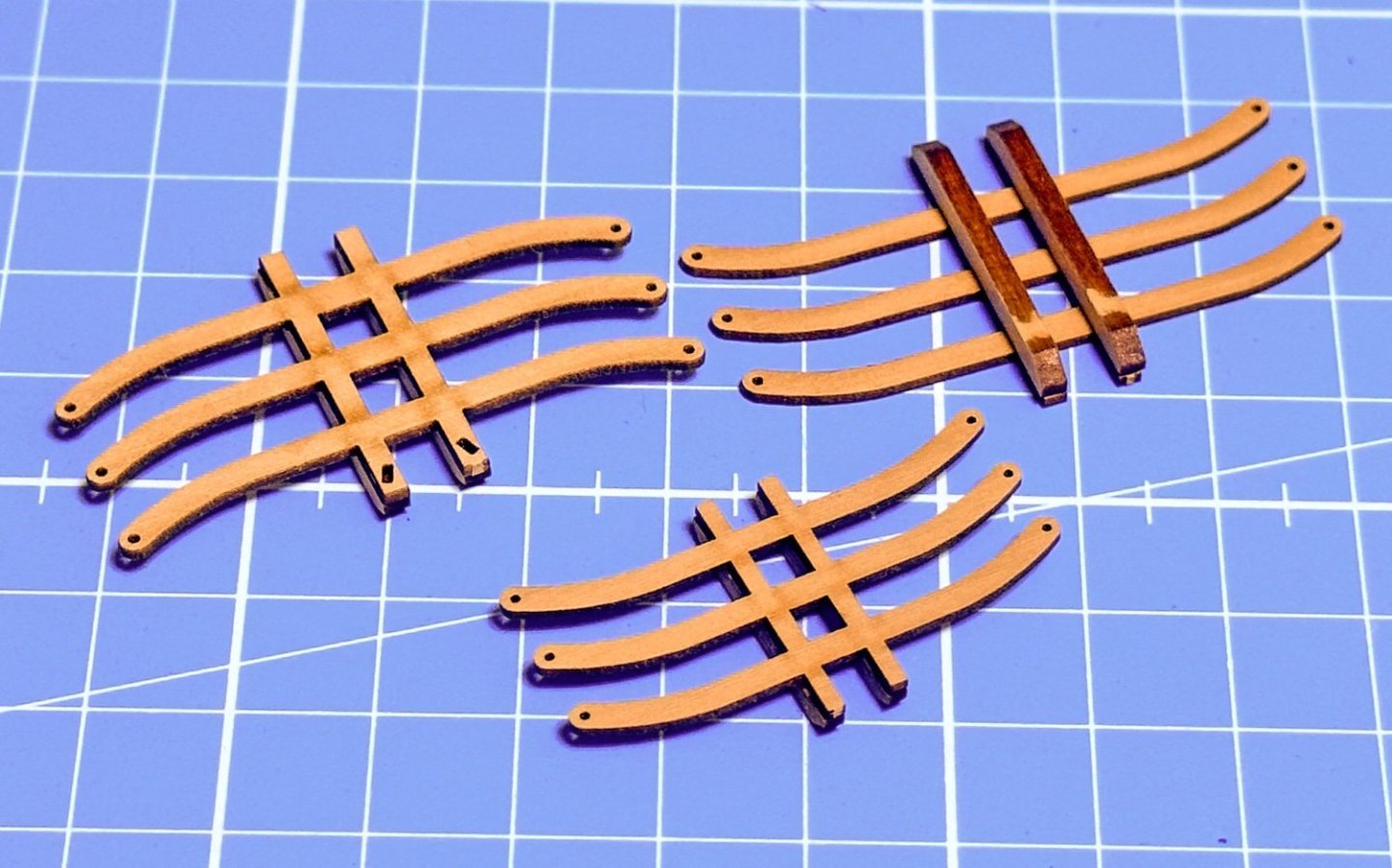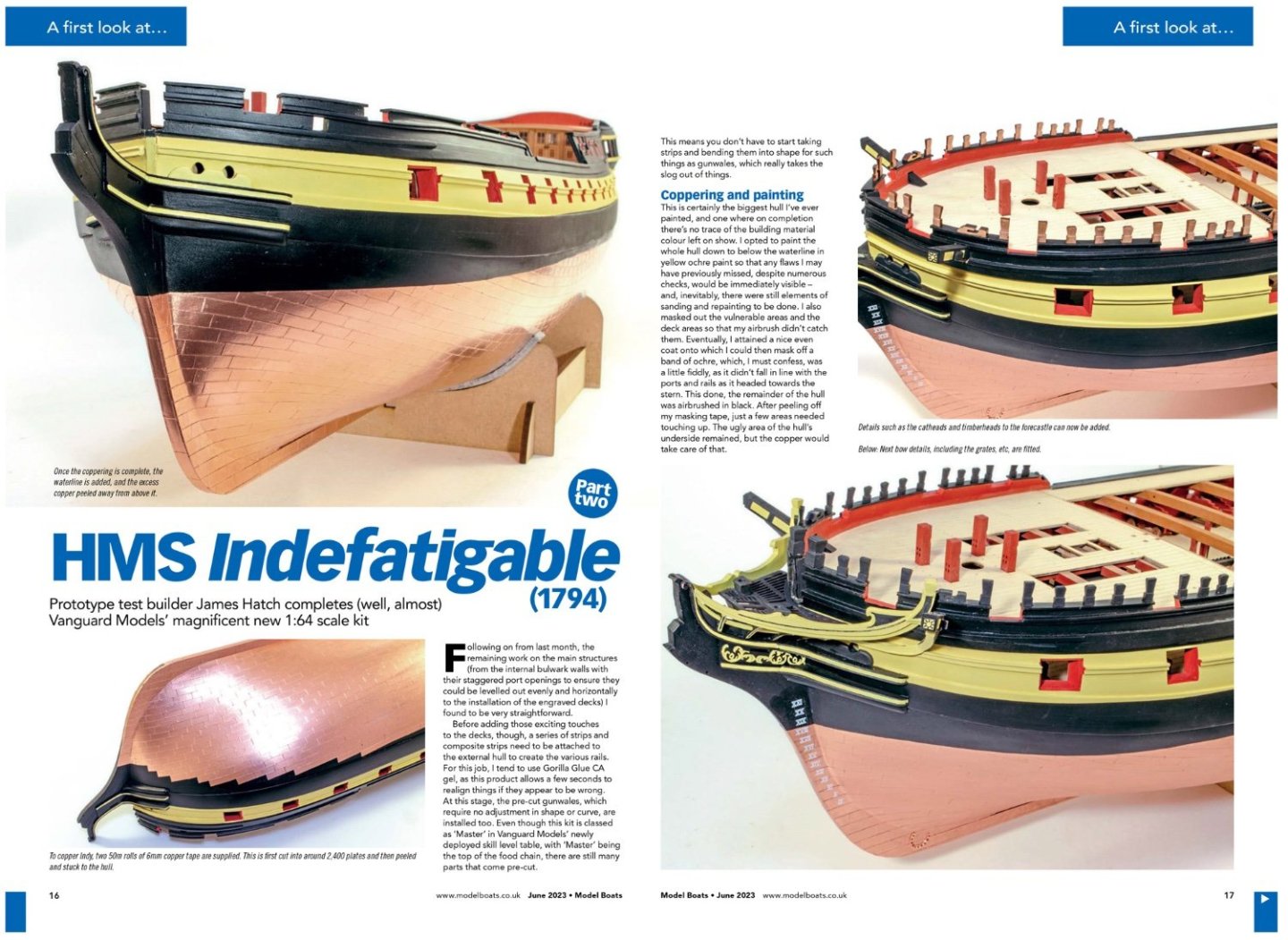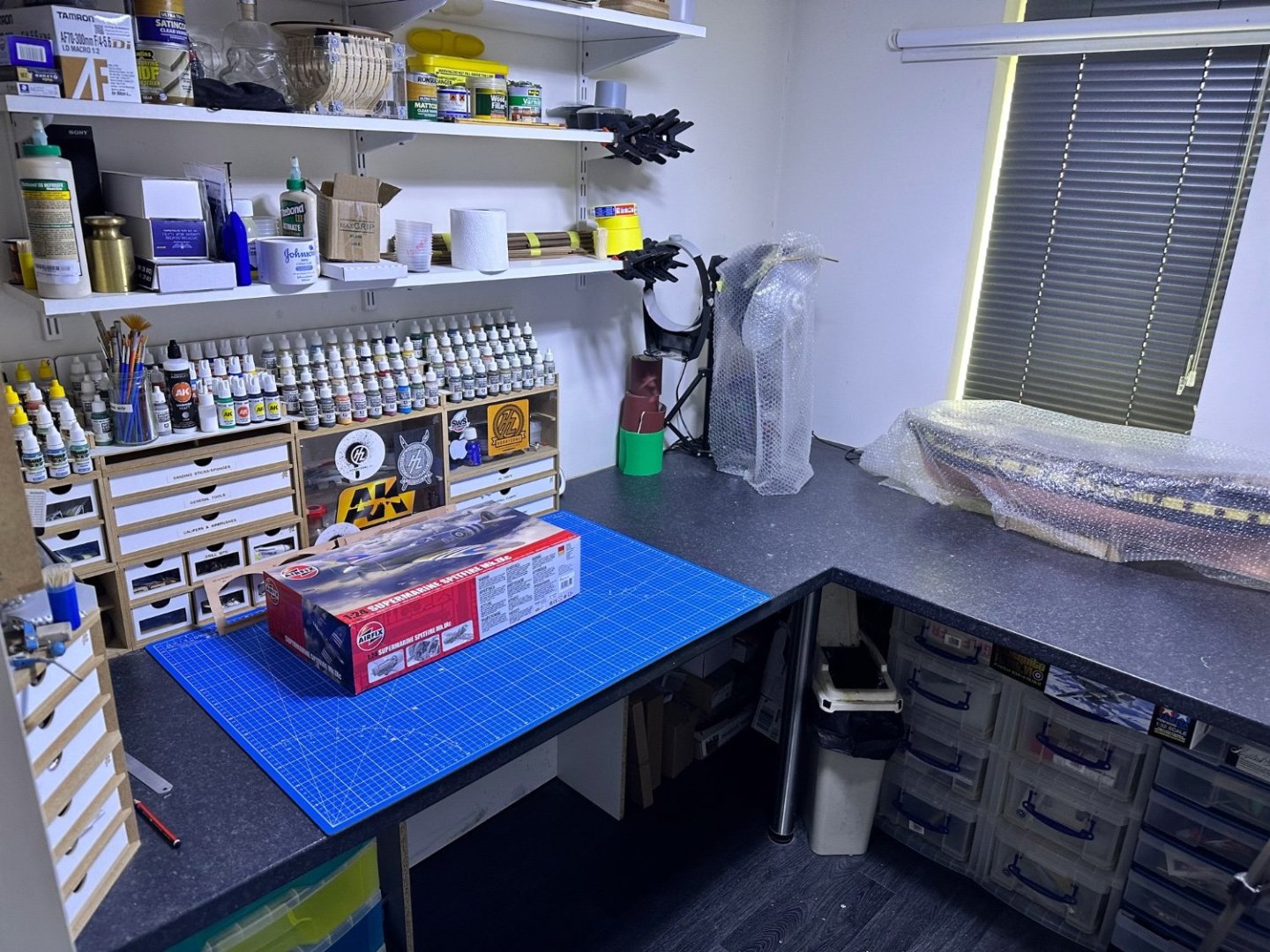-
Posts
6,060 -
Joined
-
Last visited
Content Type
Profiles
Forums
Gallery
Events
Everything posted by James H
-
Lovely progress. That's a decent base for the second layer.
- 233 replies
-
- Indefatigable
- Vanguard Models
-
(and 1 more)
Tagged with:
-
Apart from the buckled MDF part, I also banged the back side bulwarks and split one as you did. Annoying (especially in this heat!) but nothing major.
- 648 replies
-
- Indefatigable
- Vanguard Models
-
(and 1 more)
Tagged with:
-
I’m sure @chris wattonasked me to leave the booms in natural 😆
- 426 replies
-
- Vanguard Models
- Sphinx
-
(and 1 more)
Tagged with:
-
Minor update but a massive milestone. Indy's masts are now complete except for a few small details like eyelets. Of course, I'll need to use some ochre and black paint on these before fitting to the hull. Eyeing up the alignment shows that NOTHING needs to be adjusted whatsoever, which pleases me totally! Even the bowsprit slots neatly into the bow and locks into the support post on the deck below. These masts are LARGE, well, certainly to me as I've never brought a model this size towards completion. After Grecian, this seems gigantic. Anyway, here are the pics. Oh, I'll need a larger white area when it comes to the finals, as you can see here.
- 488 replies
-
- Indefatigable
- Vanguard Models
-
(and 1 more)
Tagged with:
-
Nice solution to cutting those sections evenly.
- 587 replies
-
- Indefatigable
- Vanguard Models
-
(and 1 more)
Tagged with:
-
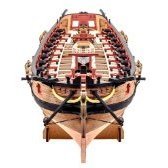
tool review Perma-Grit tools
James H replied to James H's topic in REVIEWS: Model Shipwrighting Tools, Parts and fittings
I use the broad, flat stick for pairing down dowel to make mast lower sections. Been doing that tonight.- 17 replies
-
- permagrit
- perma-grit
-
(and 3 more)
Tagged with:
-
Strap you to a plank for a week and be spoon-fed your meals. You'll be right in no time! Hope it's fixed up soon.
- 587 replies
-
- Indefatigable
- Vanguard Models
-
(and 1 more)
Tagged with:
-
I don't doubt there's probably a few more anomalies on my rigging, but don't tell anyone if you see them 😆 I figured Chris didn't need me hassling him any more than I normally do during a prototype build, so I go into 'get it done' mode more often than not.
- 426 replies
-
- Vanguard Models
- Sphinx
-
(and 1 more)
Tagged with:
-
More likely me not knowing anything about rigging and just wanting to get the job done. Do it the way Chris explains. This is also a reason I hate doing rig for instructions as I am clueless with it.
- 426 replies
-
- Vanguard Models
- Sphinx
-
(and 1 more)
Tagged with:
-
Some work has started on making mast parts. At the moment, it's anything but tapering! I've just set up my lathe to make a start on the various dowel sections. In the meantime...
- 488 replies
-
- Indefatigable
- Vanguard Models
-
(and 1 more)
Tagged with:
-
I'll be starting my bowsprit sometime this week. I can see from yours that the rake will make it extremley imposing.
- 443 replies
-
- Indefatigable
- Vanguard Models
-
(and 1 more)
Tagged with:
-
This one was an issue at the datacenter and not any issue with MSW itself. There was a problem with the power which supplied many server cabinets at the datacenter and the outage took probably many 1000s if not 100,000's sites offline what depended on that datacenter. We were simply a casualty of that. The engineers there upgraded the power supplies and now we are back.
-
Just for note, Pt.2 of my Indy article is now out in the Model Boats mag. Here's the intro pages. My workroom has also had a serious deep clean too. It really needed it. I've reinstated my beck storage station, and stripped down the photo area where you can now see the Indy hull. New cutting mat and this weekend I'll have a new chair so I can work more comfortably. Ignore the Spitfire kit. That will be started after Indy is complete and I go on a small hiatus from wood.
- 488 replies
-
- Indefatigable
- Vanguard Models
-
(and 1 more)
Tagged with:
-
I just love how this is turning out. You're at one of my favourite points in this build. 🍿
- 443 replies
-
- Indefatigable
- Vanguard Models
-
(and 1 more)
Tagged with:
-
The manual for this shows a couple of clear photos. All I did was run a single strip of tape along the keel, up against hull. From there I just added the plates in a brick fashion. That single run of tape can then later be scribed to fit the brick pattern. Add the tape plates above the waterline and then add a feint waterline over the copper. Use a fresh blade and cut along the line before removing the excess from above the waterline.
- 80 replies
-
- Grecian
- Vanguard Models
-
(and 3 more)
Tagged with:
About us
Modelshipworld - Advancing Ship Modeling through Research
SSL Secured
Your security is important for us so this Website is SSL-Secured
NRG Mailing Address
Nautical Research Guild
237 South Lincoln Street
Westmont IL, 60559-1917
Model Ship World ® and the MSW logo are Registered Trademarks, and belong to the Nautical Research Guild (United States Patent and Trademark Office: No. 6,929,264 & No. 6,929,274, registered Dec. 20, 2022)
Helpful Links
About the NRG
If you enjoy building ship models that are historically accurate as well as beautiful, then The Nautical Research Guild (NRG) is just right for you.
The Guild is a non-profit educational organization whose mission is to “Advance Ship Modeling Through Research”. We provide support to our members in their efforts to raise the quality of their model ships.
The Nautical Research Guild has published our world-renowned quarterly magazine, The Nautical Research Journal, since 1955. The pages of the Journal are full of articles by accomplished ship modelers who show you how they create those exquisite details on their models, and by maritime historians who show you the correct details to build. The Journal is available in both print and digital editions. Go to the NRG web site (www.thenrg.org) to download a complimentary digital copy of the Journal. The NRG also publishes plan sets, books and compilations of back issues of the Journal and the former Ships in Scale and Model Ship Builder magazines.

